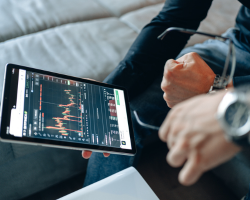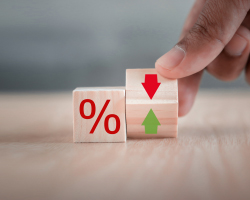Crafting a Winning Day Trading Strategy: A Comprehensive Guide

Day trading is a widely favored method for earning online, focusing on buying and selling various financial assets such as stocks, commodities, and cryptocurrencies to attain short-term gains. However, this approach carries significant risks, leading to the challenges many traders face. To ensure lasting financial success, crafting an effective day trading strategy is imperative.
While beginner traders may initially turn to classic techniques, such as trend following or reversal strategies, these methods may not always align with their individual preferences and objectives. Therefore, it is crucial to tailor a strategy to one's unique needs.
This article will guide you through the process of developing a successful day trading strategy from the ground up, while also highlighting some critical pitfalls to avoid.
Understanding the Day Trading Strategy
A day trading strategy dictates the specific rules you must adhere to when opening and closing positions. It comprises predefined criteria that must be met before you execute either a bullish or bearish trade.
Numerous trading strategies are available, with some traders specializing in scalping, which involves swiftly opening and closing multiple trades throughout the day to accumulate small returns. Others focus on swing trading, characterized by holding a few positions for several days. Moreover, traders employ strategies like trend following, breakout, reversal, and algorithmic trading.
The choice of strategy should be influenced by several factors, such as your trading schedule and the amount of time you can dedicate to day trading.

Defining Your Trading Objectives
The first step in constructing a day trading strategy from the ground up is establishing your overarching career goals. This phase encompasses various aspects, including identifying the primary purpose of your day trading activities. Are you aiming to supplement your income, or do you aspire to transform trading into your full-time occupation?
These objectives are pivotal because they will ultimately steer the choice of your day trading strategy. During this phase, it is also essential to assess your market interests and select the specific markets you plan to trade. Popular markets include stocks, forex, commodities, bonds, and cryptocurrencies.
Furthermore, you may consider delving into trading futures and options, which are financial derivatives that have gained favor among day traders. These instruments involve dealing with puts and calls, with puts granting you the right to buy an asset and calls conferring the right to short it.
Choosing Your Trading Style
In the subsequent stage, you will pinpoint the trading style that best suits your preferences and objectives. Day trading offers a diverse range of approaches that can lead to financial success in the market.
First, you can opt to become an investor, emulating the likes of Warren Buffett by purchasing assets and holding them for an extended period to benefit from share appreciation and dividends.
On the other hand, you might choose the path of a scalper, executing multiple daily trades to accrue modest gains. Alternatively, you could pursue a position trader, swing trader, or even embrace a hybrid style that combines various trading and investing strategies to align with your unique goals and circumstances.
Determining Your Trading Style
Several factors come into play when determining your trading style. Firstly, your appetite for risk plays a significant role in this decision. If you lean toward being highly risk-averse, trend-following strategies might align with your preferences. Conversely, if you are unafraid of risk, scalping might be more suitable for you.
Another crucial consideration is the time you are willing or able to dedicate to monitoring your positions actively. If you prefer immersive, continuous sessions with your trading software, scalping could be an ideal choice. On the other hand, if your objective is to open a trade and allow it to run for several days, swing trading should be your selected style.
This stage is of paramount importance as it substantially influences your eventual success in the market. Take the time needed to make an informed decision.
Developing Your Strategy with a Demo Account
A fundamental step in crafting your trading strategy is utilizing a demo or practice account. This account mirrors the features and data accessible to real traders and investors but differs in that it lacks real capital. It serves as a valuable tool for building your strategy while providing access to live market conditions. The demo account enables you to explore various approaches, make and learn from mistakes, and gain invaluable experience.

Best Practices with a Demo Account
When utilizing a demo account, there are specific rules to observe. Firstly, you should approach it with the utmost seriousness. It should genuinely bother you when your demo account experiences losses.
Secondly, it's advisable to initiate your demo account with a capital amount that aligns with what you intend to have in a live account. It makes little sense to use a $1 million demo account when your goal is to begin trading with less than $10,000.
Lastly, it's essential to test different strategies and assets in the demo account comprehensively before transitioning to a live account.
Crucial Components of Your Trading Strategy
Several vital elements should be incorporated into your trading strategy. We have already delved into considerations such as asset selection, time frame, and trading style.
Firstly, you must define the type of analysis you intend to employ. Some traders have thrived by exclusively utilizing technical analysis, while others have achieved success through fundamental analysis. Technical analysis relies on indicators like moving averages and the Relative Strength Index (RSI) to determine entry and exit points. Fundamental analysis, on the other hand, leverages news and data to execute trades.
Secondly, effective risk management is an essential component of your strategy. This entails the process of maximizing earnings while minimizing risks. Key elements of risk management include implementing Stop Loss and Take Profit levels, calculating position sizes, and utilizing leverage prudently.
Lastly, your strategy should encompass a well-defined approach to identifying entry and exit points. For instance, some traders initiate buy trades when a stock moves above the VWAP (Volume-Weighted Average Price), while others enter when two moving averages experience a crossover.
Backtesting Your Strategy
The subsequent phase entails backtesting the strategy you've meticulously developed. Backtesting involves assessing the performance of your trading strategy using historical data.
Fortunately, numerous trading platforms, including MetaTrader, offer built-in tools for this purpose. However, it is crucial to combine backtesting with forward-testing. Forward-testing involves using a demo account to evaluate your strategy's real-world performance.
It's advisable to invest several weeks in the process of both back and forward testing, which allows you to identify potential pitfalls and make necessary refinements. For instance, if your strategy originally employed a 25-period and 15-period moving average, you could experiment with adjusted parameters like a 30-period and 20-period moving average and assess the outcomes.
Refining and Optimizing Your Strategy
The final stage of strategy development revolves around refining and optimizing it. Refinement entails a meticulous review of your strategy to enhance its effectiveness. As mentioned earlier, this is where you introduce alterations to gauge potential improvements. For instance, fine-tuning the period parameters is a common adjustment.
Throughout this process, we recommend documenting and reviewing these new parameters to assess their impact on your strategy's performance.
Final Thoughts
Creating a robust day trading strategy is a journey that often necessitates a significant amount of time and dedication. In most cases, traders who operate without a strategy tend to face challenges. Therefore, we strongly advise allocating several months to craft and test your strategy.
Several resources can be instrumental in helping you establish a sound day trading strategy. First, consider reading books about trading and investments. Second, explore educational YouTube videos that provide insights into trading.
Lastly, be open to learning from experienced individuals, especially those who have been actively involved in the industry for an extended period. Their insights can be invaluable in your journey toward mastering day trading.

About AdroFx
Established in 2018, AdroFx is known for its high technology and its ability to deliver high-quality brokerage services in more than 200 countries around the world. AdroFx makes every effort to keep its customers satisfied and to meet all the trading needs of any trader. With the five types of trading accounts, we have all it takes to fit any traders` needs and styles. The company provides access to 115+ trading instruments, including currencies, metals, stocks, and cryptocurrencies, which make it possible to make the most out of trading on the financial markets. Considering all the above, AdroFx is the perfect variant for anyone who doesn't settle for less than the best.









